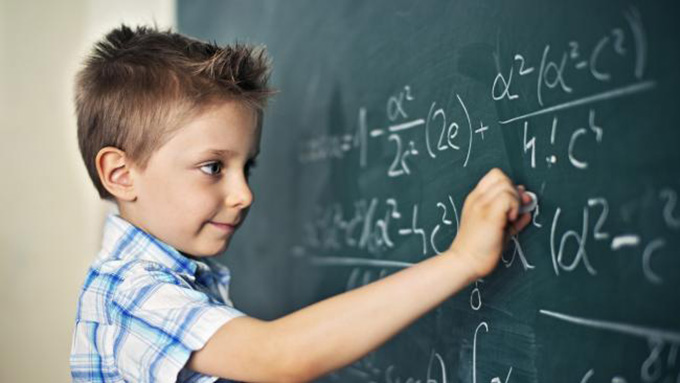
Are the young classes of our “learning nation” condemned to come and bang their heads on the “chestnut tree” of evaluation? As for the Covid-19, it may seem essential to “test”. But as with Covid-19, the cardinal question is who to test, and when. What is at stake is the benefit expected from the test.
Between September 14 and September 25 for CP and CE1 , until October 2, in the case of the sixth , students from all over France will take assessments in French and math, while positioning tests are repeated. at the entry into second. So to what extent can early-year evaluations be beneficial, for whom, and from what point of view?
Diagnosis required
There is a radical difference between a biological test, and an academic assessment: ignorance is not a disease. On the one hand, it is a question of providing a clear answer (“positive” or “negative”) to a specific question (is this individual affected by the virus?). On the other hand, it is a question of deciding on levels, both individual (pupils) and collective (classes, or establishments). The answers are then always questionable, because evaluation is not a science.
It remains nonetheless, in the field of teaching and educational activities, a necessity, within the framework of a model of action “diagnosis / treatment” (or: identification / adaptation; or again: ” objective measurement / educational use). As the Scientific Council for National Education has forcefully affirmed , it is a question of “evaluating to better help each child”, by articulating a diagnosis, if possible scientific, with an educational intervention, then informed. We observe and locate (evaluation), in order to be able to adjust (pedagogical use).
Under these conditions, it makes sense to want to diagnose as early as possible. In their report devoted to “national evaluations of the second degree (sixth and second)”, the inspectors general write that, if they find that the question of the timetable of operations preoccupied the college, this does not prevent them from pleading for an evaluation. taking place before the end of September.
Undeniable risks
However, if the intentions of the ministry which imposes these early evaluations (at the very beginning of the year) can be considered indisputably good, their realization raises difficulties and exposes a certain number of dangers. First of all, because the model which legitimizes the organization of early evaluations requires the evaluation to be diagnostic, that is to say to allow an analysis and an understanding of the observed situation.
However, there is a risk, for national evaluations, of functioning as normative evaluations, which favor comparisons and rankings. Does the CSEN not assert that “only national evaluations make it possible to situate each pupil in relation to a national benchmark”?
Here it is less the objective measurement of pupils’ knowledge and skills that is important, than the identification of differentiated teaching needs. This is what the official back- to-school texts say . Teachers must be able to “identify their students’ needs from the start of the year” in order to “implement the personalized assistance required as quickly as possible”. It is a question of “making a precise diagnosis of the needs of the pupils in order to better help them”. The precision of the diagnosis prevails over what would be the scientificity of a measurement. The need to situate must not stifle the need to analyze and understand.
Furthermore, are the conditions for a calm diagnosis met, especially after the crazy year that the students have just experienced? Isn’t there a too brutal return to the harsh reality of school tests, for pupils whom the previous six months are far from having placed in optimal conditions for learning?
Technical criticisms can be addressed to these national assessments: the access codes are unnecessarily complex; the award is time consuming; some events are poorly calibrated, and of inadequate duration. But above all, we can fear negative effects of a psychological or social nature: stress produced by the compulsory dimension of assessment, both for students and for families; stigmatizing failure for “stunned” students at the start of the year.
Nothing is decided in advance
In evaluation, the difficult thing is to find a balance between too much and too little. And to be able to do the right thing, at the right time. But things are not locked into a script written in advance. Ultimately, everything will depend on the way in which teachers take hold (or not) of these evaluations, and the concrete use they make of them. From this point of view, all hope is not lost.
Indeed, if the 2020 IGESR report notes, for the second stage, a “limited interest of teachers”, the 2019/096 report , devoted to national assessments in the first stage, reports a “massive adherence to proposed tasks ”. Certainly, reservations have been made on the duration of the sequences, or on certain exercises, in particular in mathematics. But the main regret is that “we do not see what is done with evaluations at the constituency level”, this lack of visibility can give rise to suspicions of hidden purposes. The teachers expect “support for the pedagogical use of the results”.
Three main scenarios are then possible:
- The sword in the water, if these evaluations only serve to feed statistics, without this leading to a significant change in practices.
- The shift, depending on the slope of the neoliberal context, towards an operation of simple normative evaluation, resulting in classifications and competition.
- And the effective emergence of an innovative tool to “strengthen the help that will be provided to each of the students”.
Which one will win? As Guy Béart sings (in “Fille Today”): “Who can know it? / We learn after”.
Author Bio: Charles Hadji is Honorary Professor (Educational Sciences) at the Université Grenoble Alpes (UGA)
